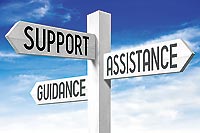 The “Hoo Doo You Run For?” 5K & 10K Run or Walk for Suicide Awareness is taking place on Saturday, November 7, 2020 in Goblin Valley State Park. This is an exciting event for the community because it is in-person (we will be adhering to COVID-19 recommendations as per the Governor and the Director of Health for the SEUHD in conjunction with Goblin Valley State Park recommendations.) We are looking forward to bringing our communities together for a great cause. The “Hoo Doo You Run For?” 5K & 10K Run or Walk for Suicide Awareness is taking place on Saturday, November 7, 2020 in Goblin Valley State Park. This is an exciting event for the community because it is in-person (we will be adhering to COVID-19 recommendations as per the Governor and the Director of Health for the SEUHD in conjunction with Goblin Valley State Park recommendations.) We are looking forward to bringing our communities together for a great cause.
The three counties that make up the Southeast Utah Health Department currently lead the state in suicide deaths per capita. Carbon, Emery, and Grand Counties only receive 2% of the state’s overall budget to really make a difference in preventing these unfortunate deaths. The HOPE Squad of Carbon, Emery and Grand Counties has partnered with the Carbon Corridor to host this event intended to bring awareness to suicide and raise funds to expand our prevention strategies, trainings, and to eradicate the stigma associated with mental health.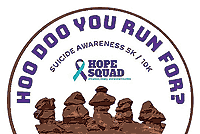
The HOPE Squad’s mission is to educate, promote, and spread awareness for at healthier community with an emphasis on mental health, suicide prevention, support for suicide loss survivors, and to cultivate a stigma-free approach to seeking help. Together with the partnerships, support, and expertise of multiple agencies throughout the counties, our overall goal is to reduce the number of people who die by suicide. To register go to Eventbrite.com and search Hoo Doo You Run For?
|
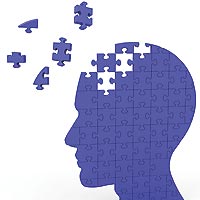
People who come to Prestige Wellness Institute aren’t just looking for relief from chronic pain, more energy, better cholesterol, or a happier gut. They want more out of life. They want to be working, traveling, gardening, reading, hiking, building, sewing, and dancing well into their 80s and 90s—not sitting in a rocking chair staring at the wall or television day after day.
My grandmother was not so fortunate. She spent the last 15 years of her life with her head slumped to her chest, being wheeled back and forth from her room to the common area of a fine nursing home. Fifty or sixty of her posterity converged on the home each Christmas to sing carols to her and the other residents. It was hard to tell whether she ever heard us or knew we were there.
Dementia has become so widespread that many people assume it is just a part of life and that it randomly strikes unfortunate folks as they age. People don’t realize how rare dementia used to be. A 2012 report estimated the worldwide prevalence of dementia to be as high as 24 million, with a projected doubling every 20 years until at least 2040. This is a new phenomenon: The first case of Alzheimer’s—the most common form of dementia—wasn’t even described in medical literature until 1906.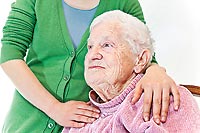
In other words, our genes aren’t causing this epidemic. Rather, it’s a direct consequence of our environment and lifestyles. Sadly, all we hear in the popular press is that dementia is incurable, that we have no idea what causes it, and that we can only hope to reduce the symptoms slightly using drugs.
Fortunately, none of this is true. Dementia has many causes, and ALL of them are preventable. Just because you have a gene that makes you more likely to develop dementia doesn’t mean you are going to. People have lived with these genes for thousands of years without losing their minds…until now.
Many factors have been identified in medical literature to lead to dementia. These include insulin resistance/diabetes, aluminum, mercury, excitotoxins (MSG and others), sugar, pesticides, other toxins, hidden infections, vitamin and mineral deficiencies, hormone deficiencies, concussions (yes, that hard knock in high school football), sleep apnea, sleep deprivation, gut dysfunction, inflammation, and gluten. The brain can handle a lot, but only for so long.
Considering the combined threat of all these factors, it’s a wonder we don’t all have dementia. But it gets worse: A number of prescription medicines impair memory and brain function, including drugs used to treat seizures, psychiatric conditions, and insomnia. Anticholinergic drugs are notoriously damaging to the brain. This class includes some drugs used to treat the symptoms of Parkinson’s, urinary incontinence, irritable bowel syndrome, and asthma.
And you might want to think twice about long-term use of anything with diphenhydramine (aka Benadryl) in it for allergies or insomnia…unless you’re okay with losing your mind down the road.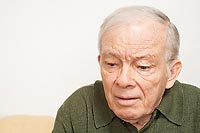
Fortunately, you don’t have to rely on the “hope” method of preventing dementia. You can undergo quantitative EEG in the office (covered by insurance) to catch the indicators of dementia early on, before you would even recognize changes in your memory or thinking. Following early detection, you can take a comprehensive approach to protecting, healing, and supporting your brain’s functions so it can serve you optimally for decades to come. Each person’s approach will be different from another’s, depending on the evaluation. Contrary to decades of medical dogma, recent research has demonstrated that brain cells CAN be repaired and connections between them restored before it’s too late. This is not science fiction: Doctors are currently reversing Alzheimer’s disease in many people.
So what can you do to reduce your risk, or to reverse early damage?
Everyone will benefit from bioidentical hormone replacement therapy. Whereas human hormones are not FDA-approved drugs, there are ample studies demonstrating the brain-preserving benefits of testosterone, estradiol, progesterone, DHEA, melatonin, and thyroid hormones.
Everyone will benefit from maintaining an optimal vitamin D level, which is significantly higher than what the Institute of Medicine recommends based on studies limited to bone health.
Everyone will benefit from intermittent fasting, stress reduction techniques, exercise, brain stimulation, unmedicated sleep, purified EPA/DHA (in pharmaceutical-grade fish oil), and medium-chain triglycerides (e.g. coconut oil).
Everyone will benefit from a careful review of medicines to identify and eliminate those that affect the brain in unhealthy ways.
Depending on testing, health history, and other factors, many people will also benefit from certain natural anti-inflammatory supplements, perinatal cellular therapy, and peptide therapy. Peptides are fragments of proteins normally found in the body. Supplementing with peptides can provide powerful support to all your other brain-supporting tools.
Imagine being able to remember names again. Or why you went into that room. Imagine being sharp as a tack again—even being able to go back to a career you love. What if you could confidently return to some of those activities you used to enjoy? What else could a comprehensive brain health evaluation and treatment protocol enable you to do? There’s only one way to find out.
|
.jpg) Dianne Wright has been named the coordinator of the certified nursing program (CNA) program at Utah State University Moab. Dianne Wright has been named the coordinator of the certified nursing program (CNA) program at Utah State University Moab.
A former instructor at Utah State University, Wright brings a wealth of teaching and nursing experience to the position.
“Dianne is a kind and student-centered teacher familiar with local needs for nursing assistants,” said Lianna Etchberger, associate vice president at USU Moab. “She is well-positioned to prepare students for the workforce, and we are excited for her to join us full-time to help us grow our own healthcare providers right here in Moab.”
Wright previously served as a CNA instructor at USU Moab from March 2018 to May 2019, and she was also a lab/clinical instructor at USU Eastern in Price in the spring of 2012. Most recently, Wright has spent the past five years as a registered nurse and staff development coordinator at Canyonland Care Center in Moab, following decades of service as a nurse at healthcare facilities in Texas, as well as a two-year stint as the school nurse at the American School of Kuwait.
“I have had a wide variety of experiences in education and in nursing,” said Wright, who was in Kuwait from 1992-94. “My experience in living overseas was very interesting and enlightening. I was able to learn about the Arabic culture and language. This has helped me to be more culturally aware and tolerant of other cultures. It has also helped me in working with students from other cultures and backgrounds.”
A native of Monticello, Utah, Wright attended Utah State as a student in 1967, and she now has a granddaughter who is enrolled at the university.
“I was very excited to be back in a full-time position at USU,” Wright said. “As I love teaching and love working with the students in this program.”
After earning an associate degree in applied science in nursing at Victoria College in Texas, Wright went on to complete a bachelor’s degree in nursing at what was then known as Corpus Christi State University in 1991, and a masters in occupational training and development at Texas A&M University-Corpus Christi in 1997.
Now as an instructor in USU Moab’s Health Professions Program, Wright said she wants those students enrolled in the school’s CNA courses “to learn and develop the technical skills and knowledge to provide competent care, as well as the compassion and the communication and critical thinking skills to function effectively in the health care setting.”
“They will even have to learn a new language, the language of health care,” Wright added. “And not only will the students develop the skills they need to become nursing assistants, they will be introduced to a very humanistic approach to caregiving. Because so many students use a nursing assisting course as the starting point for other endeavors in the healthcare profession, developing the sense of humanistic care early on assures its use throughout a person’s career.”
For more information about educational opportunities at Utah State University Moab, moab.usu.edu
|